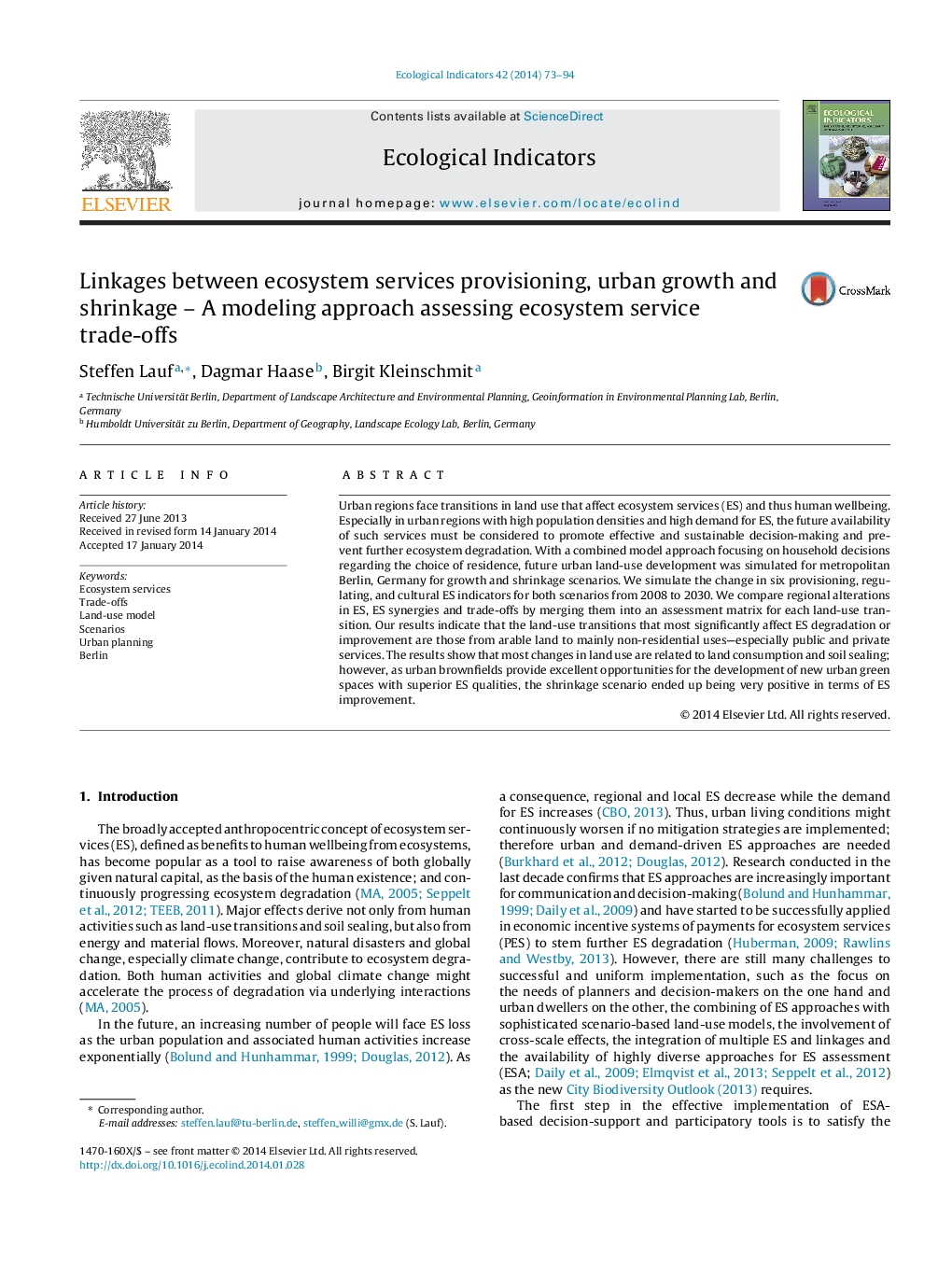| Article ID | Journal | Published Year | Pages | File Type |
|---|---|---|---|---|
| 4373144 | Ecological Indicators | 2014 | 22 Pages |
Urban regions face transitions in land use that affect ecosystem services (ES) and thus human wellbeing. Especially in urban regions with high population densities and high demand for ES, the future availability of such services must be considered to promote effective and sustainable decision-making and prevent further ecosystem degradation. With a combined model approach focusing on household decisions regarding the choice of residence, future urban land-use development was simulated for metropolitan Berlin, Germany for growth and shrinkage scenarios. We simulate the change in six provisioning, regulating, and cultural ES indicators for both scenarios from 2008 to 2030. We compare regional alterations in ES, ES synergies and trade-offs by merging them into an assessment matrix for each land-use transition. Our results indicate that the land-use transitions that most significantly affect ES degradation or improvement are those from arable land to mainly non-residential uses—especially public and private services. The results show that most changes in land use are related to land consumption and soil sealing; however, as urban brownfields provide excellent opportunities for the development of new urban green spaces with superior ES qualities, the shrinkage scenario ended up being very positive in terms of ES improvement.
